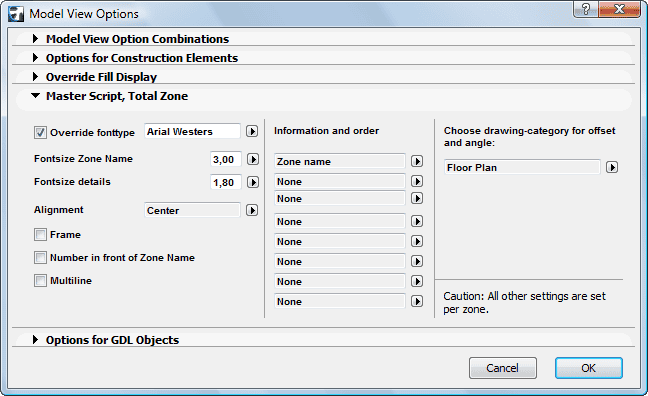My adventure started after finishing a bachelor in architecture and working in several architects’ offices. I found that drafting in 2D really annoyed me: First draw the floor plan, then the elevations, manually add in shadows… and then the architect changes the design and you start over again. Those painstaking hours of checking if the elevation matched the floor plan… If only there had been an ArchiCAD feature like Trace and Reference! I was always looking for ways to prevent errors and optimize the program.
In 2006, I started working for the Dutch reseller of ArchiCAD. At the first sight of ArchiCAD I knew that I would never go back to old 2D methods. Pretty quickly I mastered ArchiCAD and was enjoying all the automatic stuff. From there I took my first steps into GDL. By opening the open source objects from Graphisoft ArchiCAD’s Library I studied the code. My first objects were really simple, but it was fulfilling to create something and see it work. And once the first steps were taken, I became an enthusiast. I wrote more objects and overcame many GDL challenges. But the reseller needed more from me besides library-development; I had a lot of other activities like support and training. This meant little time to focus on my many ideas. Since in my spare time I was starting all sorts of GDL projects, I started my own company just for the fun of GDL.
 |
I started a topic in the ArchiCAD-talk to offer free custom GDL objects. I created a number of objects and posted them on the Object Depository, like the Sea Container. I really liked the contact with ArchiCAD users from all over the world and got many great responses. Besides the user requests I had some ideas of my own, which I started to sell on my website. Slowly the amount of objects grew and now I have 28 objects and counting.
 |
Good GDL objects are versatile, and they are never more versatile than when you create them yourself. Though GDL is not easy, anybody can create custom objects with the built-in object creators from the File / Libraries and Objects — menu, which is why I made some objects that convert self-made objects by the user into something parametric. For instance, the Object Slicer can create a Floor Plan Cut Plane-sensitive and story-sensitive display of any self-made object. Or the Silhouette, with which you can easily create people or tree silhouettes that automatically turn to the camera, all without any knowledge of GDL.
Lately I have been writing articles for ArchiMAG on a freelance basis. In these articles I describe how to make a parametric object with very little GDL knowledge. GDL can be very overwhelming, but with a few inside tricks you can unlock a great deal of power.
The core objects of Master Script are the BIM objects. ArchiCAD is a BIM program and I love to write objects that retrieve the “I” in BIM: the Information. While creating Label Everything, I discovered the true amount of data that can be extracted from an ArchiCAD element. Besides displaying the data, it can also be processed and show any data in any form you like. To improve the BIM factor of an object, it is essential that it lasts through the whole project. You can put in a lot of information, which can grow during the project. But it is important to be able to show this information in many sorts of ways. To do this I use the Model View Options. This underlying Library Global-technology allows you to store the behavior of an object per view. The object on the floor plan simply retrieves the active settings stored in the MVO and displays it accordingly. This gives the object many possible representations but can also be effectively controlled. I have incorporated this in the Total Zone and Total Marker.
 |
My next adventure is trying to attract manufacturers of building products. Generally manufacturers offer 2D CAD files as a way of marketing their products. Obviously they should start offering ArchiCAD objects, but the building industry evolves slowly. So I want to take the opportunity to ask of all of you to start asking for it! Write an e-mail to the manufacturer of your choice (or more than one) and ask for GDL objects. You can redirect them to any qualified GDL developer like me or anyone on the developers list of gotogdl.net.